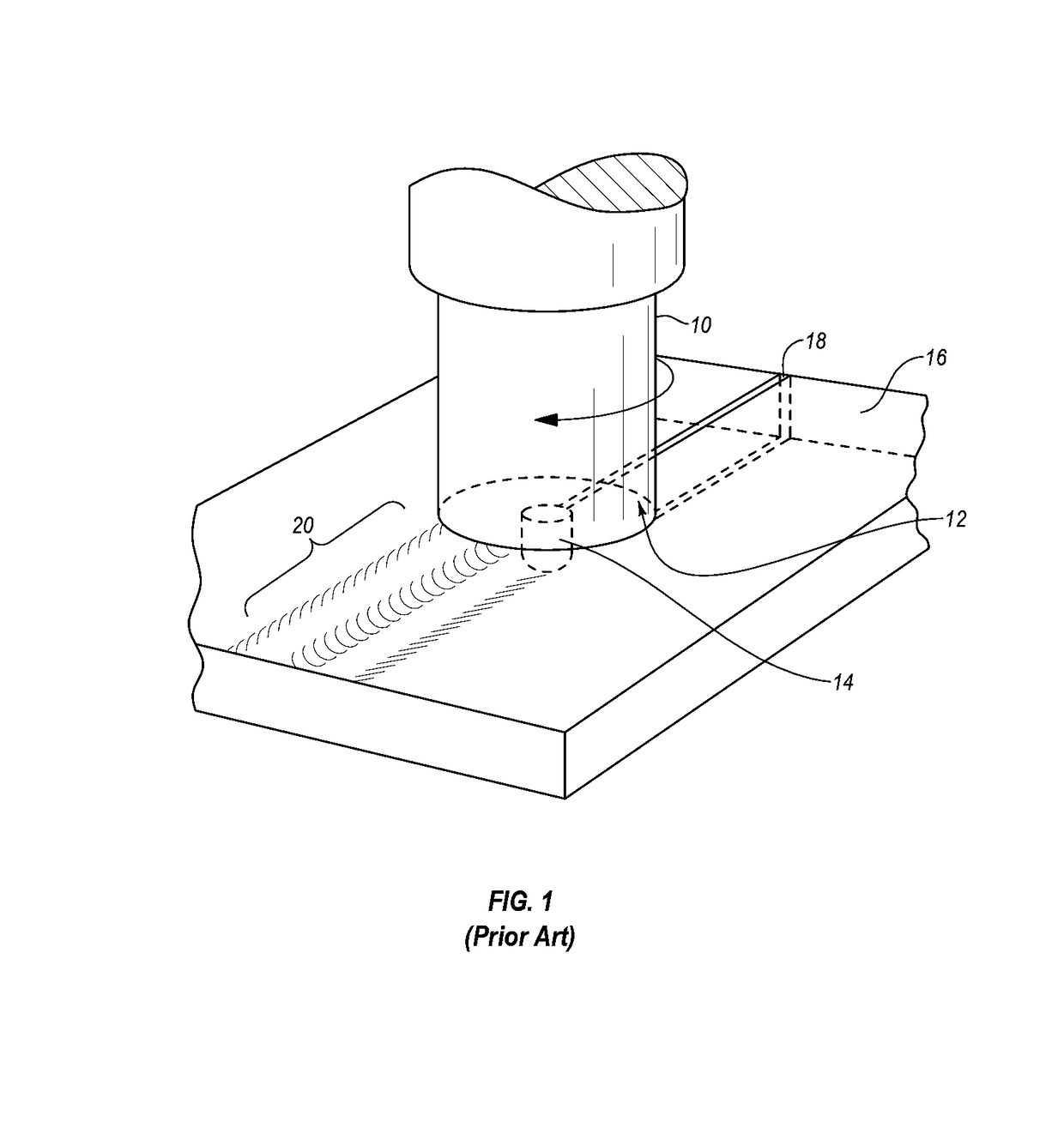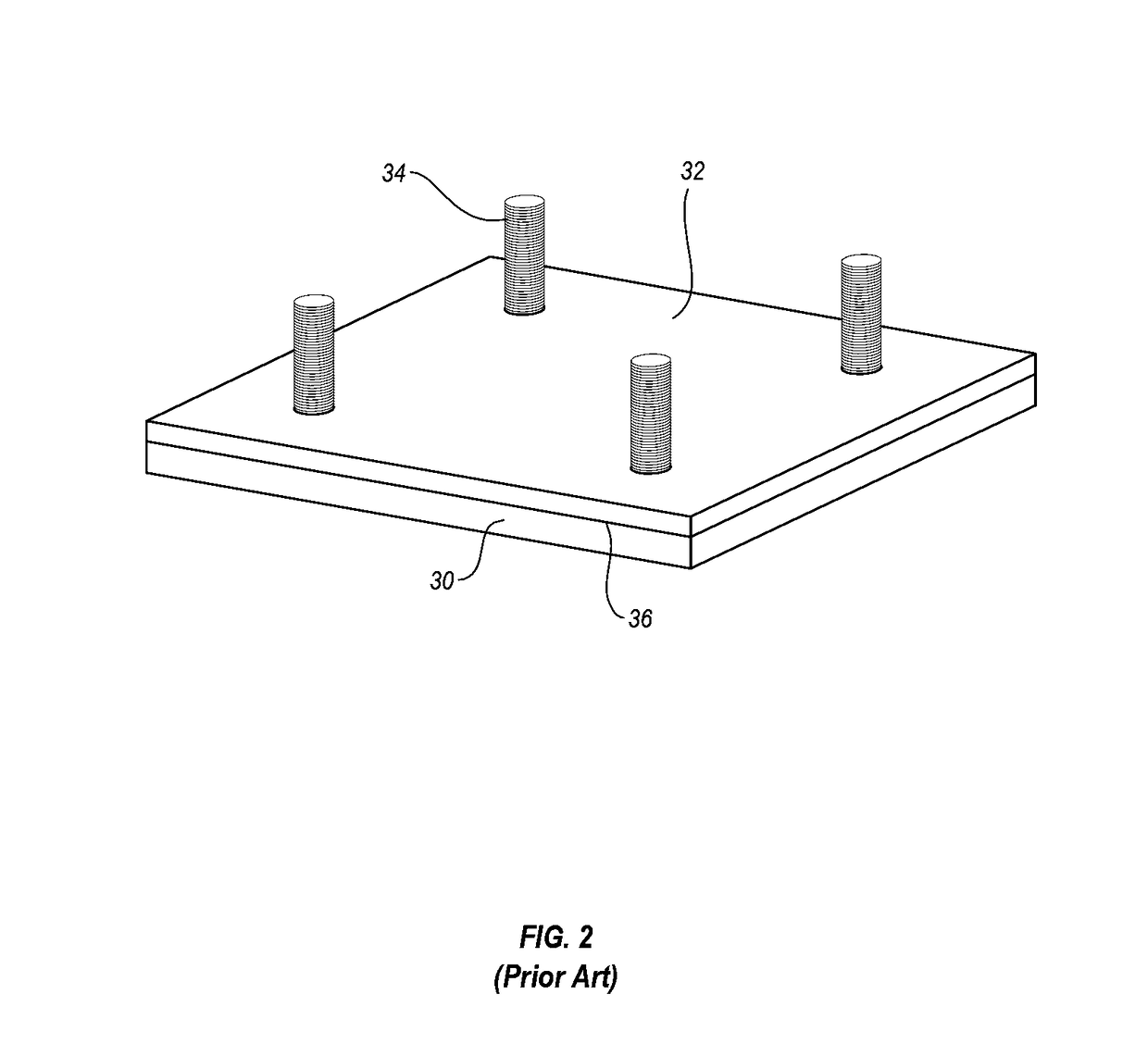Mechanical flow joining of high melting temperature materials
a high melting temperature material and mechanical flow technology, applied in the direction of manufacturing tools, non-electric welding apparatus, transportation and packaging, etc., can solve the problems of brittleness of steel and other ferrous alloys, inability to fusion join, and inability to meet the requirements of fusion welding methods
- Summary
- Abstract
- Description
- Claims
- Application Information
AI Technical Summary
Benefits of technology
Problems solved by technology
Method used
Image
Examples
first embodiment
[0062]FIG. 5 shows a perspective view of the non-weldable work piece 40 with inserts 46 disposed in the grooves 44. In this first embodiment the inserts are in the shape of a bar, may be made of steel, and may be large enough that the inserts 46 cannot be pulled from the grooves 44 through the dovetailed opening in a direction that is perpendicular to a plane of the non-weldable work piece 40.
[0063]The material selected for the inserts 46 may be selected from but should not be considered as limited to the following materials including steel, stainless steel, aluminum, high nickel alloys such as Inconel or any other material that is capable of being friction stir welded.
[0064]In some embodiments, the inserts 46 may be made of a plurality of different materials. These different materials may be selected for a particular property that may be obtained from the combination. As an example, such materials may include but should not be considered as limited to a braze material, a corrosion ...
third embodiment
[0083]FIGS. 14, 15, and 16 are of the present disclosure where the objects forming a friction-stir joined assembly are tubulars such as pipes. FIG. 14 is three views of a high melting temperature material tubular object 80. The high melting temperature material tubular object 80 is shown in perspective, from an end relative to a long axis, and perpendicular to the axis. The high melting temperature material tubular object 80 includes grooves 86 disposed around a circumference.
[0084]FIG. 15 is three views of a tubular object 82 that may form a weldable work piece for the tubular object 80. The weldable work piece tubular object 82 is shown in perspective, from an end relative to a long axis, and perpendicular to the axis. The weldable work piece tubular object 82 is large enough so that the OD of the high melting temperature material tubular object 80 fits inside the ID of the weldable work piece tubular object 82. The weldable work piece tubular object 82 may form a tight fit around...
PUM
| Property | Measurement | Unit |
|---|---|---|
| thermally stable | aaaaa | aaaaa |
| shape | aaaaa | aaaaa |
| melting temperature | aaaaa | aaaaa |
Abstract
Description
Claims
Application Information
 Login to View More
Login to View More - R&D
- Intellectual Property
- Life Sciences
- Materials
- Tech Scout
- Unparalleled Data Quality
- Higher Quality Content
- 60% Fewer Hallucinations
Browse by: Latest US Patents, China's latest patents, Technical Efficacy Thesaurus, Application Domain, Technology Topic, Popular Technical Reports.
© 2025 PatSnap. All rights reserved.Legal|Privacy policy|Modern Slavery Act Transparency Statement|Sitemap|About US| Contact US: help@patsnap.com



